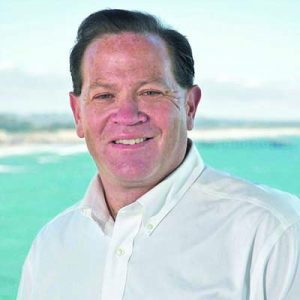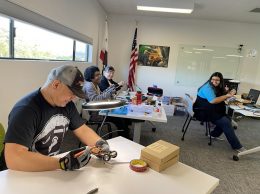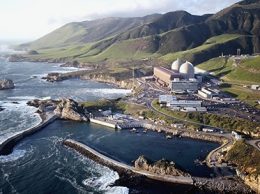Hill: Planning for a post-Diablo Canyon future

Adam Hill
By Adam Hill
As the news of the deal that will close Diablo Canyon continues to reverberate through our community, it’s critical that we begin to plan now for our post-Diablo future. We simply can’t afford to be apathetic or to behave like a broken-hearted lover bemoaning co-dependency. This is perhaps the best test yet of our resilience and, having governed through a terrible recession, and having been hands-on in economic development, I have come to believe that challenges are catalyzing and empowering.
The good news is we are not starting from scratch. There are many efforts underway that have already strengthened our local economy and we have assets that many communities lack, ranging from a terrific university to a highly desirable place to live. We have some key fundamentals finally aligned in our favor, including the ongoing collaboration of the Economic Vitality Corp. and the county and cities, the Cal Poly San Luis Obispo HotHouse and a growing critical mass of young, highly-skilled professionals.
Most importantly, we have yet more opportunities to expand the growing sectors of our economy that have the potential for the most head-of-household jobs, including tech, specialized manufacturing and renewable energy.
The challenges to both retaining our local companies (many of which are small businesses with 50 or fewer employees) and nurturing new ones are well known. Workforce housing is desperately needed and the obstacles are many — ranging from resources (water, infrastructure), to policies (state and local), to attitudinal (many residents here oppose all new growth). If we fail to address this in a more timely fashion than we are currently doing, I guarantee you we will see several of our best employers leaving at just about the same time Diablo goes offline.
While some more vocal residents (often retirees) may think sacrificing good jobs is worth it if it means we will have no further growth, what it also means is we will have vastly less revenue and recirculated incomes, which is largely how we pay for roads, parks, trails, open space, a pristine coastline and other features of our quality of life that we sometimes take for granted. We can’t “save” the place without money, and taxes alone don’t do it.
So here are some steps that I believe we must take in order to offset the potentially devastating loss of so many good jobs at the plant, as well as the loss of so much money that goes to the schools, the county and cities, and local nonprofits.
1. In the county, we must amend our general plan policies so as to attract more renewable energy projects and to make the solarization of all rooftops a reality. The two utility-scale solar farms in the Carizzo were a huge boost to our local trades and other workers, but they will be the only ones we see until we make our requirements more competitive, more streamlined and more predictable. The loss of Diablo’s power, especially when it comes to our local transmission line corridor, has to be replaced by renewables. This presents us with enormous opportunities but they won’t just come our way. We have to fight for them and we need to be armed with the right policies and incentives. There’s no reason why we can’t be a renewable energy hub if we get this right.
2. As stated above, we need to move much faster on getting the right housing in the right places, and that also means we need to have the transportation infrastructure to support it. To me, the decision on Diablo only underscores the importance of having a self-help tax dedicated to such infrastructure. Opponents argue that we should stand firm and not reward Sacramento for it’s “bad behavior” to local communities. Well, state policies led to Diablo not seeking relicensing and regardless of the merits of those policies, our community didn’t exactly have a say in the matter. In fact, we had no say. So we can either pretend that doing nothing is a principled stand or we can take care of ourselves.
3. All local governments, the county included, need to do more than pay lip service to creating a business-friendly climate. This is much more complex than it seems and marketing is the last part of it, not the first (a common mistake). We need to take action to reform policies and processes that currently make the conditions for innovation and creativity impossible. Too often we rely on “what we’ve always done.” This also requires a cultural change to some extent as most people dislike change and fight it. Many people see changes in policies as undermining protections. It doesn’t have to be that way. In every community in this county there are people who know exactly what it is that makes it so hard to do business here and exactly what we might do to change that — without sacrificing community values.
4. We not only need to manage our groundwater in accordance to state legislation, we need to see a revolution in sustainability and innovation overtake our community in every water consumptive area, from agriculture, to buildings, to yards and parks, to upgrading all our water systems for recycling and reclamation. Some of this is being done, but not at the pace needed, and if all of us are going to work together to transcend our immediate self-interests for the sake of the larger community, there has to be a greater sense of shared responsibility. We have to care not only about others now but for the future, too. And from what I’ve seen at the HotHouse and from other communities devoted to incubating companies that create emerging technologies, the way we produce and consume water will require a transition that is just as focused and policy-driven as the one we are making on energy.
So the choice is before us now: We will either make our future or surrender to fate. We can take bold actions to ensure our local economy keeps thriving or we can sit on our hands and hope that tourism and its related sectors alone will save us — they won’t.
• Adam Hill is the 3rd District supervisor on the San Luis Obispo County Board of Supervisors.












